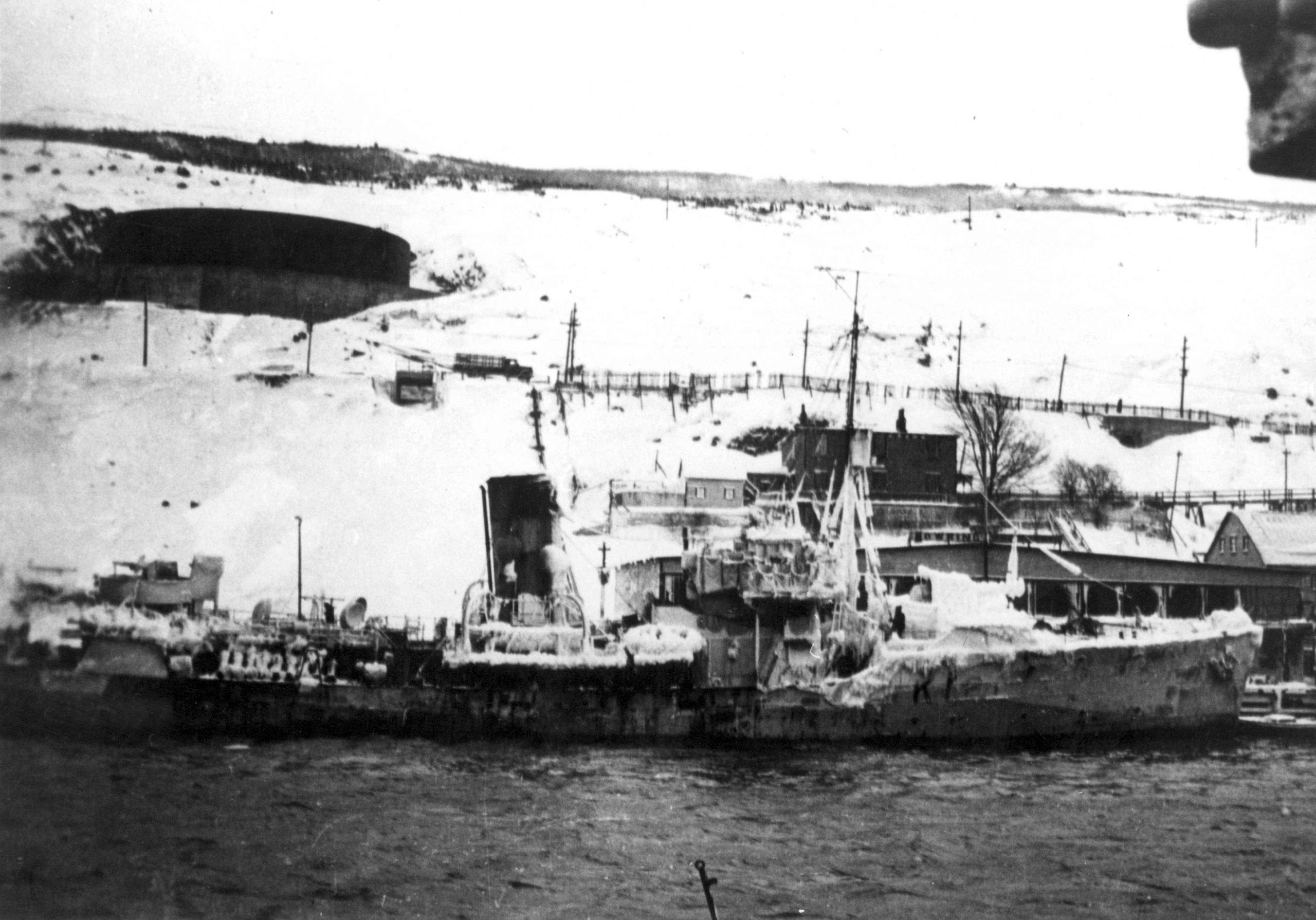
Canadian Rimouski corvette (HMCS Rimouski) covered with ice in the harbor of the port of St. John (Newfoundland island) in the winter of 1941/1942.
Rimouski corvette, the hull number K121, class – Flower.
Rimouski corvette was under construction in Canada, construction began on July 12, 1940, launched on October 03, 1940, accepted into the Canadian Navy on April 26, 1941.
Rimouski corvette, main characteristics: displacement – 925 tons. Length – 62.4-63.4 m, draft – 3.51-3.35 m (depending on modifications), width – 10.06 m. Power plant – two boilers, one propeller. The maximum speed is 16 knots. Cruising range at a speed of 12 knots – 3500 miles. The crew is 85-90 people.
Rimouski corvette, armament: one 101.6-mm cannon (BL 4 inch Mk IX) at the bow, at the stern – four 12.7-mm Vickers anti-aircraft machine guns (Vickers 0.5) or one 40-mm Pom-pom anti-aircraft gun (QF 2 pounder 1,6 ″ Pom Pom AA gun), along the sides – two twin 7.7-mm anti-aircraft machine guns Lewis (Lewis 0.303) or two 20-mm automatic anti-aircraft guns “Oerlikon” (Oerlikon). Anti-submarine armament: two aft installations for dropping depth charges (40-70 bombs), 2-4 onboard installations (Mk.II depth charge throwers).
The Rimouski corvette was used in the North Atlantic for anti-submarine defense of the Canadian coast. Participated in the Allied landings in Normandy in the summer of 1944.
The Rimouski corvette was withdrawn from the Canadian Navy in the summer of 1945.
Rimouski corvette photo source: Defense Canada.
Location: St. John’s, Newfoundland, Canada
Photo time: winter 1941-1942